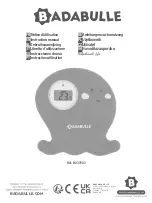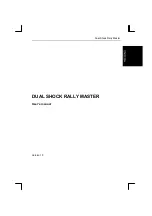
TRAXXAS TRX-4 • 43
SAFETY PRECAUTIONS
Your model is able to use LiPo
batteries. Charging and discharging batteries has the
potential for fire, explosion, serious injury, and property damage if
not performed per the instructions. Before use, read and follow all
manufacturer’s instructions, warnings, and precautions. In addition,
Lithium Polymer (LiPo) batteries pose a SEVERE risk of fire if not
properly handled per the instructions and require special care and
handling procedures for long life and safe operation. LiPo batteries
are intended only for advanced users that are educated on the risks
associated with LiPo battery use. Traxxas does not recommend
that anyone under the age of 14 use or handle LiPo battery packs
without the supervision of a knowledgeable and responsible adult.
Dispose of used batteries according to the instructions.
Important Warnings for users of Lithium Polymer (LiPo) batteries:
• LiPo batteries have a minimum safe discharge voltage threshold
that should not be exceeded. The electronic speed control is
equipped with built-in Low-Voltage Detection that alerts the
driver when LiPo batteries have reached their minimum voltage
(discharge) threshold. It is the driver’s responsibility to stop
immediately to prevent the battery pack from being discharged
below its safe minimum threshold.
• Low-Voltage Detection is just one part of a comprehensive plan
for safe LiPo battery use. It is critical to follow all instructions for
safe and proper charging, use, and storage of LiPo batteries. Make
sure you understand how to use your LiPo batteries. If you have
questions about LiPo battery usage, please consult with your local
hobby dealer or contact the battery manufacturer. As a reminder,
all batteries should be recycled at the end of their useful life.
• ONLY use a Lithium Polymer (LiPo) balance charger with a balance
adapter port to charge LiPo batteries. Never use NiMH or NiCad-
type chargers or charge modes to charge LiPo batteries. DO NOT
charge with a NiMH-only charger. The use of a NiMH or NiCad
charger or charge mode will damage the batteries and may cause
fire and personal injury.
• NEVER charge LiPo battery packs in series or parallel. Charging
packs in series or parallel may result in improper charger cell
recognition and an improper charging rate that may lead to
overcharging, cell imbalance, cell damage, and fire.
• ALWAYS inspect your LiPo batteries carefully before charging.
Look for any loose leads or connectors, damaged wire insulation,
damaged cell packaging, impact damage, fluid leaks, swelling
(a sign of internal damage), cell deformity, missing labels, or
any other damage or irregularity. If any of these conditions are
observed, do not charge or use the battery pack. Follow the
disposal instructions included with your battery to properly and
safely dispose of the battery.
• DO NOT store or charge LiPo batteries with or around other
batteries or battery packs of any type, including other LiPos.
• Store and transport your battery pack(s) in a cool dry place.
DO NOT store in direct sunlight. DO NOT allow the storage
temperature to exceed 140°F or 60°C, such as in the trunk of a car,
or the cells may be damaged and create a fire risk.
• DO NOT disassemble LiPo batteries or cells.
• DO NOT attempt to build your own LiPo battery pack from
loose cells.
Charging and handling precautions for all battery types:
• BEFORE you charge, ALWAYS confirm that the charger
settings exactly match the type (chemistry), specification, and
configuration of the battery to be charged.
FIRE HAZARD!
WARNING! CAUTION! DANGER!
• DO NOT attempt to charge non-rechargeable batteries
(explosion hazard), batteries that have an internal
charge circuit or a protection circuit, batteries that have been
altered from original manufacturer configuration, or batteries that
have missing or unreadable labels, preventing you from properly
identifying the battery type and specifications.
• DO NOT exceed the maximum manufacturer recommended
charge rate.
• DO NOT let any exposed battery contacts or wires touch each
other. This will cause the battery to short circuit and create the risk
of fire.
• While charging or discharging, ALWAYS place the battery (all types
of batteries) in a fire retardant/fire proof container and on a non-
flammable surface such as concrete.
• DO NOT charge batteries inside of an automobile. DO NOT charge
batteries while driving in an automobile.
• NEVER charge batteries on wood, cloth, carpet, or on any other
flammable material.
• ALWAYS charge batteries in a well-ventilated area.
• REMOVE flammable items and combustible materials from the
charging area.
• DO NOT leave the charger and battery unattended while
charging, discharging, or anytime the charger is ON with a battery
connected. If there are any signs of a malfunction or in the event
of an emergency, unplug the charger from the power source and
disconnect the battery from the charger.
• DO NOT operate the charger in a cluttered space, or place objects
on top of the charger or battery.
• If any battery or battery cell is damaged in any way, DO NOT
charge, discharge, or use the battery.
• Keep a Class D fire extinguisher nearby in case of fire.
• DO NOT disassemble, crush, short circuit, or expose the batteries
to flame or other source of ignition. Toxic materials could be
released. If eye or skin contact occurs, flush with water.
• If a battery gets hot to the touch during the charging process
(temperature greater than 110°F / 43°C), immediately disconnect
the battery from the charger and discontinue charging.
• Allow the battery pack to cool off between runs (before charging).
• ALWAYS unplug the charger and disconnect the battery when not
in use.
• ALWAYS unplug the battery from the electronic speed control
when the model is not in use and when it is being stored or
transported.
• DO NOT disassemble the charger.
• REMOVE the battery from your model or device before charging.
• DO NOT expose the charger to water or moisture.
• ALWAYS store battery packs safely out of the reach of children
or pets. Children should always have adult supervision when
charging and handling batteries.
• Nickel-Metal Hydride (NiMH) batteries must be recycled or
disposed of properly.
• Always proceed with caution and use good common sense at all
times.
TRX-4 Assembly Manual.indd 43
12/28/17 5:33 PM






































